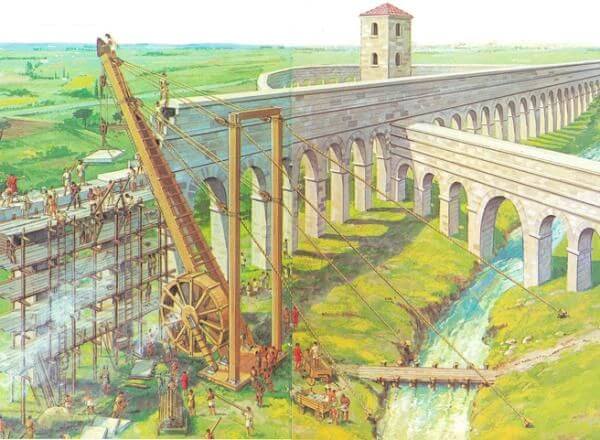In the world of construction and heavy lifting, cranes have played a vital role for centuries. From their humble beginnings as simple machines to the sophisticated and powerful equipment we see today, the evolution of cranes has been a fascinating journey. This article takes a historical perspective, tracing the development of cranes from ancient times to the modern era, highlighting the key innovations and advancements that have shaped their evolution.
Ancient Origins: The Earliest Cranes in Human History
The use of cranes in human history dates back to ancient times. These early cranes were simple machines, consisting of a long beam with a pulley system. They were used for various purposes, such as lifting heavy objects and constructing buildings. The earliest evidence of cranes can be traced back to ancient Egypt, where they were used to build the pyramids. These early cranes were operated by human labor, with workers using ropes and pulleys to lift and move heavy stones. Over time, cranes evolved and became more sophisticated, with the introduction of hydraulic and electric systems. Today, cranes are essential in various industries, including construction, shipping, and manufacturing.
Technological Advancements: How Cranes Revolutionized Construction

Cranes have revolutionized the construction industry with their technological advancements. These powerful machines have made it possible to lift and move heavy materials with ease, increasing efficiency and productivity on construction sites. The development of hydraulic systems and computerized controls has further enhanced the capabilities of cranes, allowing for precise and controlled movements. This has not only improved safety for workers but also reduced the time and effort required for construction projects. Additionally, the introduction of mobile cranes has made it possible to transport these machines to different locations, making them versatile and adaptable for various construction needs. Overall, cranes have played a crucial role in transforming the construction industry and continue to be an essential tool for modern construction projects.
Industrial Revolution: The Impact of Cranes on Manufacturing and Transportation
Cranes have played a crucial role in the Industrial Revolution, revolutionizing both manufacturing and transportation. These powerful machines have greatly increased productivity and efficiency in factories, allowing for the mass production of goods. With the ability to lift heavy loads and move them with precision, cranes have made it possible to construct large structures such as bridges and skyscrapers. In the transportation sector, cranes have facilitated the loading and unloading of cargo from ships, trains, and trucks, making the movement of goods faster and more efficient. Overall, the invention of cranes has had a profound impact on the industrial world, transforming the way goods are produced and transported.
Modern Innovations: The Latest Developments in Crane Technology
Crane technology has come a long way in recent years, with modern innovations revolutionizing the industry. One of the latest developments is the use of advanced sensors and automation systems, which allow cranes to operate more efficiently and safely. These sensors can detect potential hazards and automatically adjust the crane’s movements to avoid accidents. Additionally, new materials and designs have made cranes lighter and more compact, increasing their versatility and ease of use. Furthermore, the integration of digital technologies has enabled real-time monitoring and remote control of cranes, improving productivity and reducing downtime. Overall, these advancements in crane technology are transforming the construction and logistics sectors, making operations faster, safer, and more efficient.
Environmental Considerations: How Cranes are Adapting to Sustainable Practices
Cranes, a vital component of construction projects, are now adapting to sustainable practices to minimize their environmental impact. With the construction industry being one of the largest contributors to carbon emissions, it is crucial to find ways to reduce this impact. Cranes are now being designed with energy-efficient features such as regenerative braking systems and hybrid power options. These advancements not only reduce fuel consumption but also decrease noise pollution on construction sites. Additionally, cranes are being equipped with sensors and automation technology to optimize their operations, reducing idle time and unnecessary energy usage. By embracing sustainable practices, cranes are playing a significant role in creating a greener and more sustainable construction industry.
Future Prospects: What Lies Ahead for the Evolution of Cranes
The future prospects for the evolution of cranes are promising. With advancements in technology and engineering, cranes are becoming more efficient, versatile, and safer to use. One area of development is the use of automation and artificial intelligence, which can enhance the precision and speed of crane operations. Additionally, there is a growing focus on sustainability, with the development of eco-friendly cranes that reduce emissions and energy consumption. The integration of sensors and data analytics is also expected to play a significant role in the future, allowing for real-time monitoring and predictive maintenance of cranes. Overall, the future of cranes looks bright, with continuous innovation and improvements on the horizon.
Conclusion
In conclusion, the evolution of cranes has been a fascinating journey that spans thousands of years. From the simple wooden devices used by ancient civilizations to the sophisticated hydraulic systems of modern cranes, the advancements in technology have greatly improved their efficiency and capabilities. As we continue to push the boundaries of engineering, it is exciting to imagine what the future holds for these indispensable machines.
1. What is the history of cranes?
The history of cranes dates back to ancient times, with evidence of their use in ancient Egypt and Greece. They were primarily used for construction and lifting heavy objects.
2. How have cranes evolved over time?
Cranes have evolved significantly over time. In ancient times, cranes were operated manually using ropes and pulleys. In the modern era, cranes are powered by engines and equipped with advanced technology for increased efficiency and safety.
3. What are the different types of cranes?
There are various types of cranes, including tower cranes, mobile cranes, crawler cranes, and overhead cranes. Each type is designed for specific applications and has its own unique features and capabilities.
4. What are the main uses of cranes today?
Cranes are used in a wide range of industries and applications. They are commonly used in construction sites for lifting heavy materials and equipment. They are also used in shipping ports, warehouses, and manufacturing facilities for loading and unloading cargo.
5. How do cranes contribute to safety in construction?
Cranes play a crucial role in ensuring safety in construction sites. They enable workers to lift and move heavy objects without the need for manual labor, reducing the risk of injuries. Additionally, modern cranes are equipped with safety features such as load monitoring systems and anti-collision technology.
6. What is the future of crane technology?
The future of crane technology looks promising. Advancements in automation, robotics, and artificial intelligence are expected to revolutionize the crane industry. This includes the development of self-driving cranes and remote-controlled operations, making cranes more efficient and safer to use.

